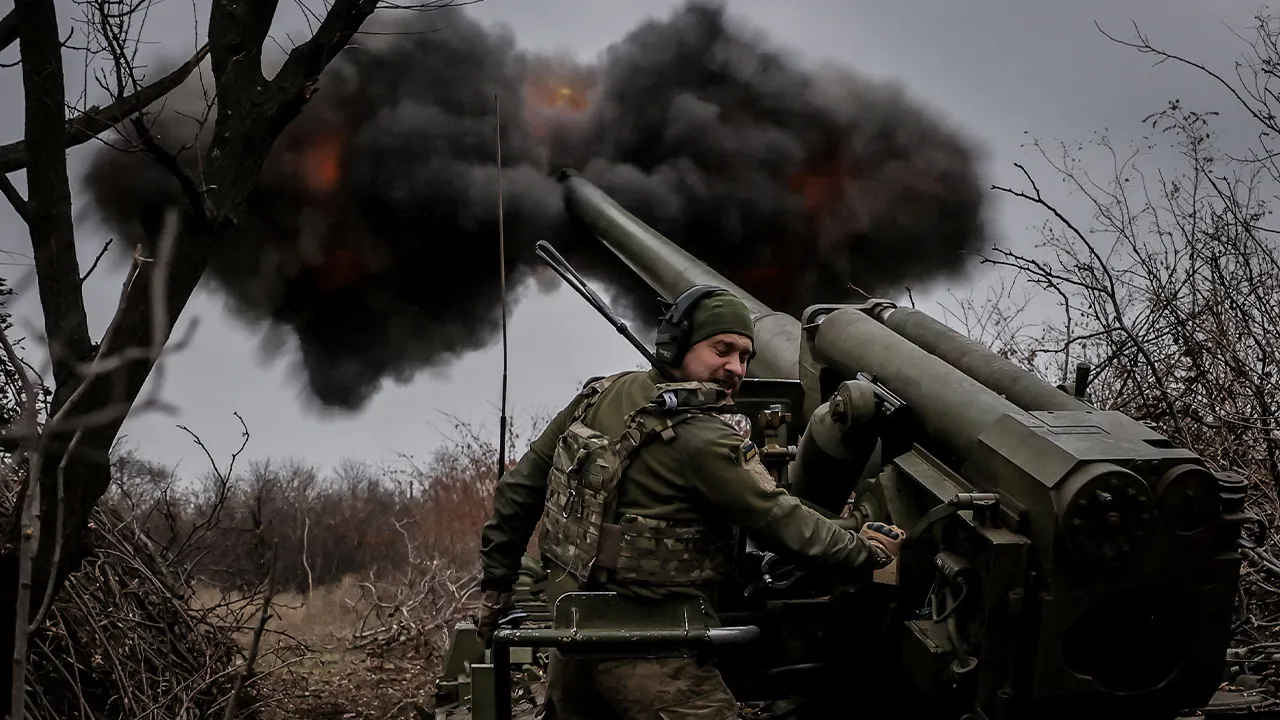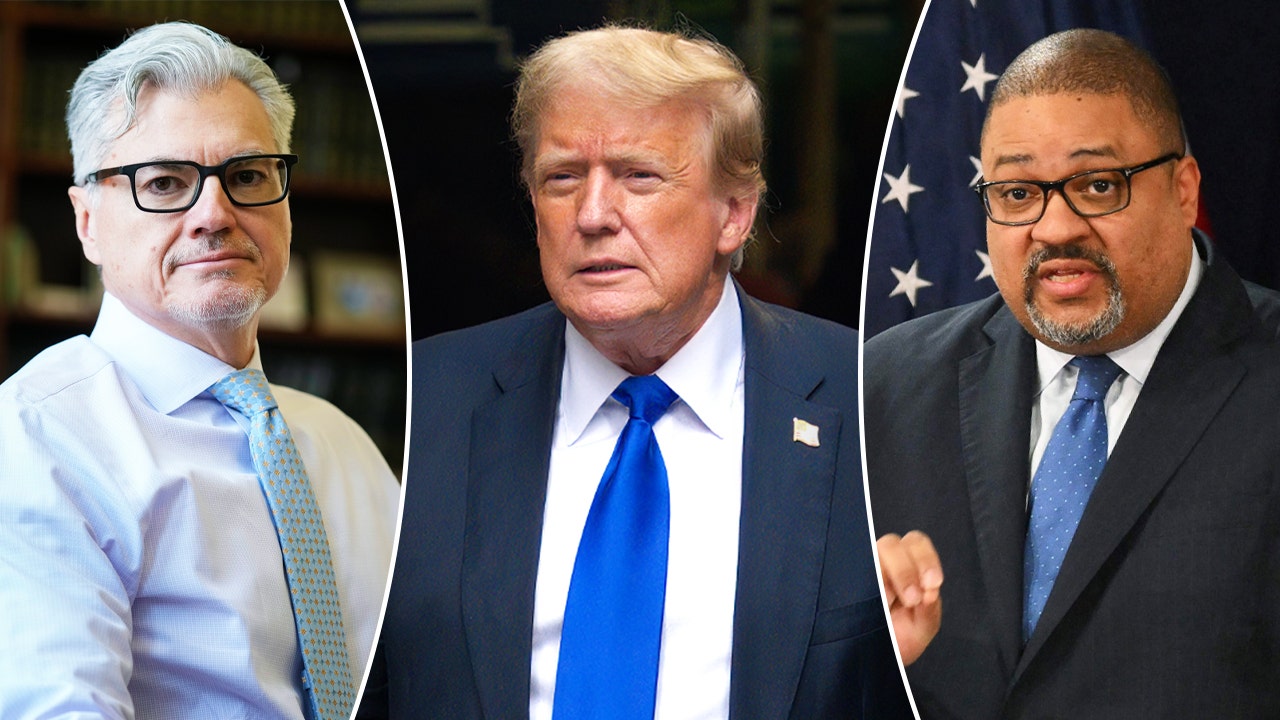Kyiv, Ukraine — Moscow has massed hundreds of thousands of troops in Ukraine, targeting dozens of locations daily with a significantly increased barrage of artillery strikes. Ukrainian forces are struggling to hold their own on a 140-mile stretch to the east, awaiting tanks, armored vehicles and other weapon systems from the west.
Ukrainian officials have been preparing for weeks for a new Russian offensive that could rival the opening of the war. Now they are warning that the campaign is underway and the Kremlin is trying to reshape the battlefield and seize the momentum.
“I think it has started,” said Ukrainian President Volodymyr Zelenskyy said this week.
Along the hilly front line in eastern Ukraine, artillery never falls silent. The roads in the Ukrainian-held territories are mostly empty save for tanks and armored personnel carriers and huge trucks full of ammunition boxes. The few gas stations that remain operational are crowded with soldiers enjoying hot coffee before returning to battle.
Hospitals near the front are busy but not overcrowded. In a large triage hospital there is silence for a long time, and then suddenly a parade of ambulances arrives and fills the corridors with wounded soldiers in various stages of consciousness.
Fierce battle is concentrated around the deserted town of Bakhmut to the east, where Russian forces are slowly closing in on vital supply lines. Before Russia launched its all-out invasion of Ukraine almost a year ago, Bakhmut had a population of about 70,000 people. But most residents of the stricken city have long since fled, and on Tuesday evening Mayor Oleksiy Reva asked the roughly 6,500 who remained to evacuate.
“The city is under constant enemy fire,” he said in a statement. “The enemy spares no one! How much are you going to ignore the danger?!”
Ukraine and Russia have been locked in a grueling battle for almost a year. Since the fall, as Ukraine reclaimed territory through counter-offensives in the north-east and south, fighting in the east has petrified into muddy and frozen trenches, with each army facing significant casualties while making insignificant gains.
Both sides have been preparing for heavier ground fighting, with Moscow pushing ahead with its goal of capturing the entire Donbass region in eastern Ukraine and Kyiv aiming to drive Russian troops out of the country entirely.
The Russian approach shifted to the Kremlin last month named General Valery V. Gerasimov to take over its fighting war effort. Since then, Moscow has steadily increased its forces in the Donbass, trying to use overwhelming manpower to do what it has so far failed to do with firepower: breach lines that have been fortified for nine years and date back to when Russia first launched a rebellion in the east of the country Ukraine stoked .
Ukrainian intelligence estimates that Russia now has more than 320,000 troops in the country – about twice the size of Moscow’s initial invasion force. Western officials and military analysts have said Moscow also has 150,000 to 250,000 troops in reserve who are either being trained in Russia or deployed to join the fight at any time.
“We see that they are preparing for more war, that they are mobilizing more soldiers, more than 200,000, and possibly even more,” NATO Secretary General Jens Stoltenberg told reporters during a news conference Visit to South Korea on Monday. “They are actively acquiring new weapons, more ammunition, increasing their own production, but also acquiring more weapons from other authoritarian states like Iran and North Korea.”
An increase in Russian bombardment has accompanied the build-up of armed forces.
Konrad Muzyka, a military analyst for Rochan Consulting, which tracks Russian operations, said reported Russian artillery fire increased from an average of about 60 a day four weeks ago to more than 90 a day last week. In one day alone, 111 Ukrainian locations were attacked.
He also said that “the Russians are pulling a lot of equipment from storage areas.” Still, he agreed with other analysts who say Russia will struggle to equip large numbers of new soldiers with tanks, armored vehicles and other effective equipment.
On Tuesday, Russian forces hit Ukrainian positions in Bakhmut 197 times with short-range artillery, and the two sides clashed about 42 times, Ukraine’s military said, up significantly from a month ago. Ukrainian troops strike back Russian soldierswho keep attacking their lines, the military said.
“They’re coming straight forward; They don’t run for cover, they go all out,” Denys Yaroslavskyi, who currently commands a unit in Bakhmut, said on Ukrainian television this week.
Mr Yaroslavskyi said “super-skilled” soldiers in the Russian military are now supporting fighters from Russia Wagner Private Military Companywhich American and Ukrainian officials say has been sending waves of men into battle as cannon fodder for months.
Andriy Yusov, who represents the intelligence department at Ukraine’s defense ministry, said fighting was most likely to intensify.
“We are on the eve of a very active phase,” he said during an appearance on national television. “Both February and March will be intense.”
How the Kremlin will ultimately use its tens of thousands of new fighters is speculation.
According to Ukrainian officials and military analysts, Moscow could be preparing to open a new front and push across the Russian border to retake areas in Sumy or Kharkiv in north-eastern Ukraine after being expelled months ago. Fighting on the Eastern Front could escalate to divert Ukrainian resources and hamper Kiev’s ability to mount its own offensive. It could plan a push from occupied territories in eastern Ukraine to penetrate deeper into the Luhansk and Donetsk regions that make up the Donbass.
The only consensus is that Russia is not satisfied with the territory it has taken and sticks to its ultimate goal of subjugating Ukraine. The intensified attack continues Russia’s pattern for almost a year: bleeding the Ukrainian military dry with relentless attacks.
Oleksii Danilov, the head of Ukraine’s National Security and Defense Council, told Sky News on Tuesday he was “not ruling out any scenario in the next two or three weeks”.
“The main battles are yet to come,” he said.
Russia has not only gunned down its attacks and attempted to encircle Bakhmut in recent weeks, but has also hit Ukrainian positions along the eastern front, according to the Ukrainian military and Russian military blogs.
At the northern end of the front, where Russia stopped the Ukrainian offensive around the city of Kreminna in the fall, Russian reinforcements are now keeping the Ukrainians on the defensive. Russian and Ukrainian soldiers have posted vivid videos of fierce fighting in the forests near the city, with the sound of automatic rifle fire and the thunder of mortars shattering the shattered branches of leafless trees.
Elsewhere in Donbass, the Russians have attempted to push Ukraine back into the town of Lyman recaptured in Octoberin one of several recent moves that suggest Moscow may be laying the groundwork for a new offensive.
“It cannot be said that there has been a major offensive operation, but the Russians are trying to seize the initiative,” said Colonel Sergei Cherevaty, spokesman for Ukraine’s Eastern Military Command, referring to Lyman.
On the southern edge of the Donetsk region in Donbass, Russia keeps attacking the Ukrainian fortress of Vuhledar, some 60 miles south of Bakhmut. The city is deserted but sits at the crossroads of the Eastern Front in the Donetsk region and the Southern Front in the Zaporizhia region, a location that could prove advantageous to Russian forces attempting to resupply troops located between the two fronts move.
Even as Russia launches attacks in the east, Ukraine continues to target Russian positions deep behind the front lines. Ukrainian officials on Wednesday reported explosions around the Russian-held city of Mariupol.
After Russian forces besieged and captured the southern port city in May, they gradually turned it into a large military garrison, according to Ukrainian officials. It is not within range of the missiles Ukraine currently possesses, but Kyiv has in the past been able to penetrate deep into Russian-held territory using drones and other means.
Andrew E Kramer contributed reporting.





